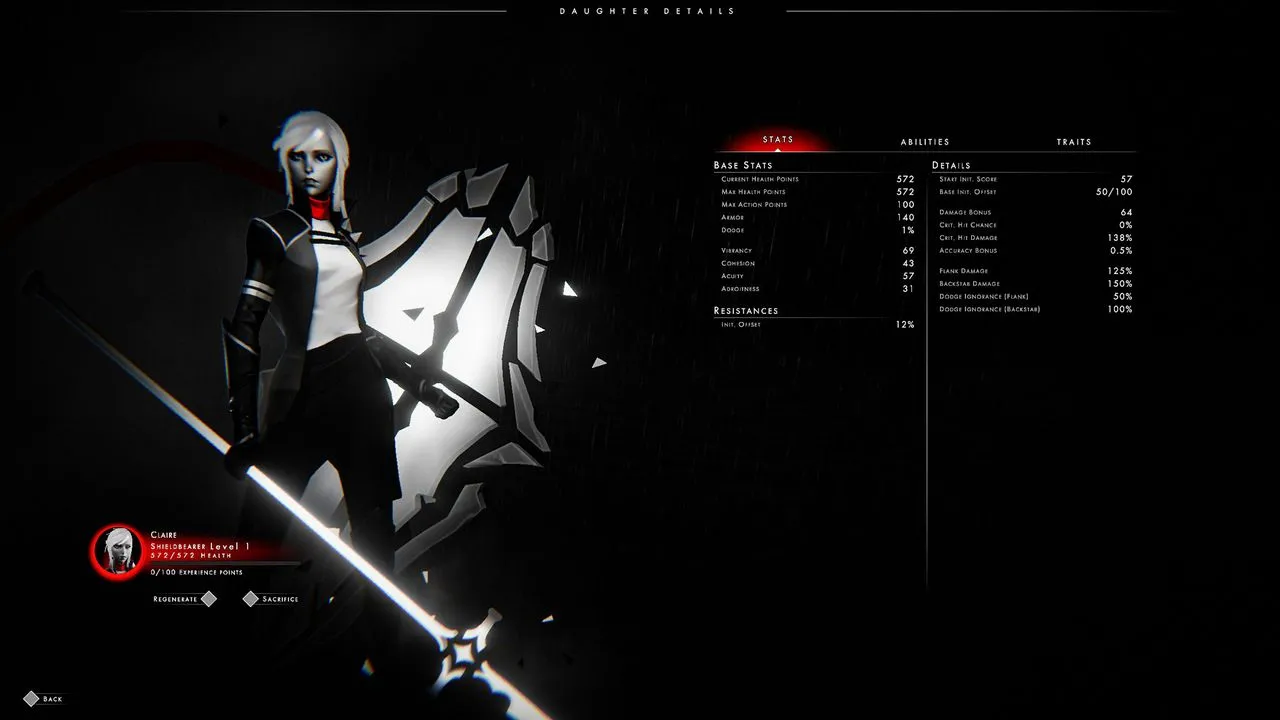
Othercide: A Stunning Visual Experience Marred by Gameplay Imbalance
Othercide, a turn-based tactical rogue-like game developed by Lightbulb Crew and published by Focus Home Interactive, captivated audiences at gaming conventions with its unique art style and intriguing gameplay. However, these curated glimpses masked underlying design flaws that ultimately detract from the overall experience. This review delves into both the triumphs and shortcomings of Othercide.
A World of Darkness and Despair
 OthercideOthercide is set in a dark, gothic world inspired by late 19th-century England, ravaged by a mysterious plague unleashed by a sinister entity known as The Child and its monstrous minions. The game’s most striking feature is its distinctive black and white art style, punctuated by splashes of red. Every frame exudes a sense of gloom and despair, perfectly mirroring the game’s central themes of sacrifice, death, and decay.
OthercideOthercide is set in a dark, gothic world inspired by late 19th-century England, ravaged by a mysterious plague unleashed by a sinister entity known as The Child and its monstrous minions. The game’s most striking feature is its distinctive black and white art style, punctuated by splashes of red. Every frame exudes a sense of gloom and despair, perfectly mirroring the game’s central themes of sacrifice, death, and decay.
The stark contrast of white and red against a predominantly black backdrop creates a palpable sense of hopelessness, effectively complementing the core gameplay. The narrative revolves around the eternal conflict between good and evil, embodied by The Mother and The Child. However, as the story unfolds, players discover nuances beyond this simple dichotomy, revealing shades of gray within both factions.
 OthercideThese narrative complexities add layers of meaning to the game’s mechanics, creating a depth worth exploring. Thematically, Othercide offers a truly unique experience. Its bleak and unsettling atmosphere effectively blurs the lines between tactical RPG and horror, leaving a lasting impression.
OthercideThese narrative complexities add layers of meaning to the game’s mechanics, creating a depth worth exploring. Thematically, Othercide offers a truly unique experience. Its bleak and unsettling atmosphere effectively blurs the lines between tactical RPG and horror, leaving a lasting impression.
A Flawed Campaign Structure
 OthercideIn Othercide, players create warriors known as Daughters, accepting missions from The Mother to battle enemies, gather resources, and gain experience to upgrade their Daughters. Initially, the combat missions offer sufficient variety. However, as the game progresses, Othercide’s flaws become increasingly apparent.
OthercideIn Othercide, players create warriors known as Daughters, accepting missions from The Mother to battle enemies, gather resources, and gain experience to upgrade their Daughters. Initially, the combat missions offer sufficient variety. However, as the game progresses, Othercide’s flaws become increasingly apparent.
The game’s most unique mechanic revolves around Daughter healing. Daughters do not regenerate health automatically between missions. To heal a Daughter, players must sacrifice another Daughter of equal or higher level. This system inadvertently makes higher-level Daughters increasingly fragile.
 OthercideThis fragility forces players to rely on lower-level Daughters to conserve valuable resources for more challenging missions. Unfortunately, the game imposes a limit on the number of missions that can be undertaken within a specific timeframe. Failure to complete these missions results in defeat. This limitation encourages a tedious strategy of extending these timeframes, grinding to level up Daughters for sacrifice, and preparing for difficult missions.
OthercideThis fragility forces players to rely on lower-level Daughters to conserve valuable resources for more challenging missions. Unfortunately, the game imposes a limit on the number of missions that can be undertaken within a specific timeframe. Failure to complete these missions results in defeat. This limitation encourages a tedious strategy of extending these timeframes, grinding to level up Daughters for sacrifice, and preparing for difficult missions.
This repetitive gameplay loop plagues the latter half of the game, leading to fatigue. As a rogue-like, failure and repetition are inherent. However, Othercide’s lack of balance results in runs that are either too short or excessively long. This can be particularly frustrating when significant progress is lost due to an abrupt defeat, especially after reaching certain milestones that force players into a heavy grind with underwhelming rewards.
 Othercide
Othercide
Conclusion
Othercide presents a compelling visual and narrative experience, successfully crafting a dark and unsettling atmosphere. However, its flawed campaign structure, unbalanced gameplay mechanics, and repetitive grind ultimately undermine its potential. While the initial hours are captivating, the game’s shortcomings become increasingly pronounced, ultimately hindering long-term engagement. The innovative healing system, while conceptually interesting, ultimately contributes to the game’s imbalance. While Othercide offers a unique and visually stunning experience, its gameplay ultimately falls short of its promise.





Comments (0)